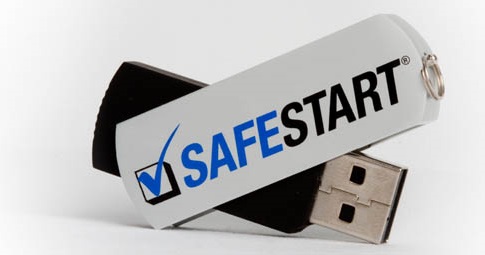Every week SafeStart provides informative articles, guides and news posts on safety to educate safety professionals and give them resources they can use in newsletters, bulletins, safety talks and more. As part of our commitment to safety we even sponsor industry research to uncover emerging trends in the field.
We make all of our content publicly available for free because we understand how important it is for OHS advocates to stay at the top of their game through continuous learning and professional development.
Our material can also be shared in safety communications with employees. It’s a great way to round out your next newsletter and provide useful advice to keep workers safer. It’s no replacement for formal training on human factors but it’s a good way begin introducing it to employees and the rest of your OHS team.
Here are a few ideas on how to access and use our content
- Use the search feature on our website to find articles and news posts on topics that are important to you. If you want to reduce the prevalence of low back pain, searching “back injuries” will provide you with tips you can share on safely shoveling snow or increasing the frequency of stretching at work.
- Read our news section for safety advice, news and upcoming webinars. It’s a great way to stay on top of current safety events and discover news you can use.
- Download one of our safety articles. Share it with frontline supervisors and others who are responsible for employee safety and make reference to some of the key points in your newsletter.
- Use a chart or graph from our safety guides to illustrate key points about human error. For example, our image on the top 3 causes of slips, trips and falls is a great way to visualize the impact of human factors on safety.
- Follow us on LinkedIn to get the latest updates and share them with your colleagues.
- Pick up one of our free resource USB drives at our booth at the ASSE, NSC, VPPPA and other safety conferences.
Guidelines for use
A lot of work goes into researching, developing and presenting all this material. You’re welcome to use it in accordance with the following guidelines:
- Use the content as is. Feel free to use excerpts of our content but please don’t change any writing or diagrams.
- Give credit where it’s due. Cite SafeStart as the source whenever you use our material.
- If you share it online, link to the original source. This is also a great way to highlight your favorite part, add in your own perspective and provide our link if someone wants to read more.
- If you use it in your training, treat it as additional information or a different perspective and not as a replacement for compliance or safety skills and awareness training.
The most important part
The most important part about using SafeStart articles and guides is understanding the concepts behind them. We talk a lot about human error and the role that states of mind play in people getting hurt. And for good reason—human factors play a role in over 90% of all injuries.
The content we provide is full of useful information but human error can’t be solved by providing an article in a newsletter or by simply telling employees not to rush or not to be tired. It takes a dedicated training program like SafeStart to help employees properly manage human factors and to protect themselves from injury-causing errors.
Once you recognize that human error is a problem, it’s important to know what to do about it. Our on-demand webinars cover a variety of topics related to human error—and like the rest of our content, they’re free.

